INNOVATION IN HANDISKIING!
The SNOOC provides an alternative to facilitate access to snow sports for all. It complements existing equipment and facilitates access to snow sports for disabled people.
It widens the possibilities for structures that welcome people with specific needs, both physically and mentally, as well as for those around them. Sit-skiing will allow people to discover new sensations of sliding and to approach handiskiing in a different way.

STATE OF PLAY OF HANDISKIING
The solution is quite binary, there is standing skiing or chair skiing.
Handiskiing as it is developed in France mainly concerns people in wheelchairs.
For these people, extremely comfortable and efficient ski chairs have been developed by the French manufacturer Tessier, the world leader in sit-skis.
Although wheelchair disability is the most visible disability, it represents only 3% of all disabilities.
We can only note the lack of adapted ski solutions for people with disabilities milder than paraplegia and tetraplegia.
For example, for people with :
- a motor deficiency,
- deformities of the lower limbs,
- knee problems,
- sensory impairment, balance problems,
- intellectual or mental disabilities
- degenerative diseases such as multiple sclerosis, Alzheimer disease, Parkinson's disease, Ostéoporose, fibrous bone dysplasia, Emery-Dreifuss disease, Paget's disease, pulmonary fibrosis.
We will therefore present a wide range of solutions for handiskiing:
SNOOC, wheelchair skiing, sit-skiing, stand-skiing and other techniques. As well as the advantages and limitations of these handiskiing and adapted skiing equipment.
LE SNOOC, UN ÉQUIPEMENT HANDISKI

The SNOOC accelerates the learning curve and the autonomy of people who have difficulty accessing skiing without being totally dependent. It offers a gliding solution a few centimetres off the ground to remove the fear of falling. The supports are 3 points to increase the stability, the transfer of support is simplified and a contact with the snow near increases the capacity to preserve its balance.
This sit-ski is accessible to all, this different approach to skiing provides new sensations in a playful and sporting spirit.
Here are some disabilities which, depending on the level of dependence, could be adapted to skiing on a SNOOC and rapidly acquire a great deal of autonomy:
people with multiple sclerosis, muscular dystrophy, or amputees.
A testimonial from Geir Arne Hageland, an above-knee amputee, and
Sigrid Sellereite whose ankles are broken after a forced landing in a paraglider:
BENEFITS AND LIMITATIONS OF SNOOC
The limitations of SNOOC
SNOOC does not allow people with spinal cord injuries, paraplegics, quadriplegics to ski.
The advantages of SNOOC
The SNOOC allows this population of people with so-called "invisible" disabilities, which represents 80% of disabled people, to have access to skiing.
It allows ski resorts and facilities to
- To make discover and share the activity of sitting skiing to a much wider public (accompanying the person in difficulty, mental disabilities...)
- To offer a safe approach to begin seated skiing (light, close to the ground and not tied down)
- To build up a pool of seated skis with a much lower investment cost than traditional equipment for the facilities and professionals involved in supervision.
- To reduce the supervision rate (1 instructor for 5 participants) for many people.
- To quickly bring the adapted skiers and their companions to autonomy.
- To offer an adapted ski activity including all participants without any stigmatization (very fun for the "valid" as well as for people with difficulties).
- To offer a unique sporting and natural experience, accessible to as many people as possible and fun: ski touring / downhill skiing with a seat.
- To offer a different and fun approach to disabled skiing.
WHERE TO DO SNOOC SIT-SKIING ?
Find our SNOOC partner resorts, the touring itineraries and all the places where you can find SNOOC!
See also: WHERE TO SIT SNOOC IN THE FRENCH ALPS
https://snooc.ski/blogs/infos/ou-faire-de-la-luge-snooc-alpes-francaises
WHEELCHAIR SKIING

A wide range of people can practice sit-skiing, from skiers with lower limb disabilities who can access autonomy on the slopes, to people whose disability does not allow them to be autonomous.
Different types of equipment will be able to adapt to this diversity of needs. It is a new way of discovering handiskiing and adapted skiing.
UNI-SKI AND DUAL-SKI
Often referred to as sit-skiing, these types of skiing involve sitting on a seat that has a single ski (mono) or two skis (bi) underneath. Skiers also use outriggers to help with balance and turning. Mono and bi-skiing require a lot of upper body and trunk strength.
Uni-skiing and dual-skiing are often practised by people with spinal cord injuries, multiple sclerosis, muscular dystrophy or amputations. The wheelchair ski will therefore provide comfort and thrills.
The UNISKI or DUALSKI sit-ski will allow you to progress to total autonomy. It is suitable for people in wheelchairs or able-bodied people, it requires an efficient use of the arms as well as a good management of the balance.
Seated skiing is accessible to children and adults with little neurological impairment.
TANDEM SKI
The tandem ski is designed to discover the mountain environment for people without any autonomy. It allows access to all forms of practice thanks to the experience of the ski instructor who pilots from the back with the help of a bar, and uses his own skis to drive the seated ski and to have a complete handling of the tandem ski.
On the tandemski, the use of the arms is not necessary. It is particularly suitable for people who do not have precise control of their upper limbs, for people who are very fatigued, have fragile bones or arthrodesis.

It is also suitable for "able-bodied" adults who wish to discover the pleasures of skiing without having to learn the technique. Tandem skiing is therefore accessible to people without any autonomy in the mountain environment.
KARTSKI
The kart ski allows you to practice in autonomy or semi-autonomy.
The lateral balance is largely facilitated by a support on two very spaced skis and a very low positioning of the centre of gravity.
The ski instructor can be permanently connected to the machine by a lifeline allowing him to ensure safety according to the abilities of the skier.
It is possible to practice the sit-ski version of the kart on all types of snow but on limited slopes.
The kartski is approved for use in adapted sports or handiskiing.

ADVANTAGES AND LIMITATIONS OF WHEELCHAIR SKIING
Ski chairs are extremely efficient and indispensable for people with spinal cord injuries or without upper limb control (less than 10% of disabilities).
Overall, ski chairs represent a significant cost, which hinders the investment of resorts and individuals wishing to equip themselves. The equipment is often acquired by ski schools that are sensitive to the disability situation or by specialised associations.
Ski chairs also require a lot of storage space which is not always available in the resort.
Although very efficient, it is not essential for a majority of the lighter disabilities (80% of cases) to start handiskiing.
The advantages of the wheelchair ski, tandem ski and kart ski:

The ski chair is a particularly accomplished piece of equipment, it offers a powerful and indispensable support for tetraplegic and paraplegic people.
It allows independent skiing in a variety of conditions on slopes and in powder snow. It is a precise piece of equipment that offers intense sensations. This equipment allows you to participate in the Olympic Games and even to do extreme skiing!
https://www.youtube.com/watch?v=k2FNNK2ggr0
The tandem ski is perfectly adapted to allow people who are unable to ski independently to experience the thrill of skiing in complete safety. It allows you to evolve on many terrains and to experience intense sensations thanks to the mastery and knowledge of the ski instructor.

The Kart Ski is very accessible, its stability and ease of use allow the skier to be autonomous from the first descent in the choice of trajectories and speed, while being secured by a professional.
The limits of wheelchair skiing, tandem skiing and kart skiing:
The Ski Chair
For the uni-ski and dual-ski chair-ski, the learning curve is not negligible. A number of lessons will be necessary before reaching complete autonomy.
The rather high centre of gravity accentuates the impact in the event of an edge error when you are a beginner. It is also relatively physical to stand up in case of a fall. It is important to be well supervised when starting out.
Tandem skiing
In lessons with an instructor, the supervision rate is high, it is often necessary to have one instructor per participant, which adds a certain cost to the practice of the activity.
Tandem skiing does not provide any autonomy for the participant.
Kart skiing
As for the tandem ski, the supervision rate is high, it is often necessary to count on an instructor per participant, which adds a certain cost to the practice of the activity.
The space available for kart skiing is limited by the degree of slope. In fact, kart skiing cannot be used on red slopes.

ADVANTAGES AND LIMITATIONS OF ALTERNATIVE SOLUTIONS FOR DISABLED SKIING
For disabilities that are not paralysis of the lower limbs, skiing has until now been practised standing up with one ski, two, three or four support points, which we will detail below.
In our opinion, this is a way of perceiving the sport through the "prism" of the "able-bodied". Probably guided by a competitive vision of skiing. A philosophy that maintains that skiing is done standing up.... unless it is impossible!
Far from denying that stand-up skiing is accessible, for us the issue is not to ski standing up or to perform in competition. We have chosen to refocus on the pleasure of sliding and controlling your trajectory.

This approach and the sporting approach are complementary since the more disabled people enjoy skiing, the more disabled people will be interested in competition.
It is no secret that the technical aspects of skiing are demanding. Coordination, weight transfer, support management, posture and sensations are all parameters to be managed in order to maintain control of one's trajectory and direction. Falling on hard snow, accentuated by uncontrolled speed, is the punishment often feared by beginners. For a person with physical or mental difficulties, this technical requirement of stand-up skiing is very likely to be experienced as a brake, if not a wall, to the discovery of skiing.
There is therefore a gap in terms of adapted ski equipment for access to skiing if we want to limit the constraints and learning difficulties of people with disabilities.

A video testimony from Jean Charles POIROT, ESF instructor in Chamonix:
Finally, SNOOC sit-skiing is financially very accessible as its purchase cost is lower than a complete low-end ski equipment (boot, ski, bindings). The price of equipment for disabled skiers is not very affordable and is relatively expensive depending on individual needs.
SNOOC allows this population of people with a so-called "invisible" disability, which represents 80% of disabled people, to have access to skiing, as Mathilde S. explains:
"With bone problems in my hips from a very young age, I was not regularly able to learn to ski. I had a few lessons, and remember struggling to get my 3rd star at the age of 14/15. I didn't ski much after that, as I didn't have the opportunity to come to the mountains regularly, and then as a young adult, I went back a bit more. However, it was no picnic.
My husband is an experienced skier and even though he was as patient as an angel, I was still scared on the slopes. I then had 3 children in 8 years, so obviously that drastically reduced the opportunities to be on the slopes. Since my youngest can go to Piou-Piou, we wanted to find a solution for me, skiing not being one anymore. The last time I was on skis (I think 4 years ago), I fell with no consequences other than a very big scare and I didn't want to do it anymore.Two years ago, I tried handiskiing with an ESF guide in La Salle les Alpes. Even if the experience was very good, the look of the others in the seat was difficult to bear (I don't have any after-effects from my hip problems). Last year (February 2019) my husband stumbled across the snooc and I was immediately hooked.
Between its ease of use and the fact that it allows me to be on the slopes with my family, I was thrilled! I started with green runs, then blue runs and this year I'm sometimes doing reds and blacks (at my own pace and often on the side of the run at the moment).
I'm glad I bought my snooc and hope to continue using it as long as possible. For me, it is currently the only solution that allows me to ski easily and at a normal cost, with my family.
I think this alternative is a great way to enjoy the resort, the heights of the resort and when I see beginner skiers I think they probably don't know about the snooc but they should try it..."
SKI TOURING AND DISABILITY

When we talk about disability, it is difficult to imagine how a person could ski touring! Well, think again, SNOOC makes ski touring accessible to everyone!
It is not only sit-skiing that is adapted to people with reduced mobility, SNOOC can also be defined as an adapted sport.
The main difficulty in ski touring is the descent.
SNOOC makes this part accessible to as many people as possible with adapted ski touring.
For Kjell Vidar Røyne, who had both legs amputated below the knee after a fall from a roof as a teenager, SNOOC is a solution for ski touring.
A former top-level Handi Hockey athlete, Kjell has mastered wheelchair skiing. He has his own Scarver. The problem is the weight. When climbing, the weight of the frame to be carried increases the effort, the perspiration and the friction between the prosthetic leg and the chairs. The Snooc seat, which weighs only 2kg in the rucksack, makes it easier to be independent and to discover other landscapes.
SKI TOURING AND ADAPTED SPORT

SNOOC is also a solution for people with mental disabilities to discover skiing and nature through adapted sports.
Some structures have already taken the step with very positive feedback:
TESTIMONIAL
"We had the chance to discover the snooc in winter 2017, during our inter-institutional alpine snow day (dedicated to people with mental and/or psychic disabilities), the aim of which is to introduce as many people as possible to snow activities through initiations (alpine skiing, ski touring, DVA, sledging, etc.).
Curious about the SNOOC that had been proposed to us, we went for it and noted the success of the participants who came back with smiles on their faces and sparkling eyes. Educators and participants alike had a great time and thought it was "awesome"!
We were then lucky enough to be trained, as employees of the CDSA 73, to be able to assist the instructors in our leisure activities during the 2017 French Adapted Sport Ski Championships. Once again, it was a great surprise to see that it is a machine that adapts to everyone and in a surprising way, even to the less autonomous.
The SNOOC is an interesting activity for our public because it is accessible. It allows us to work on our physical and coordination skills, while at the same time being fun. "
Maeva GUILLAMIN, development officer of the Savoie Departmental Committee for Adapted Sport
Other TESTIMONIALS and feedback from Julien Rolland and Gauthier, on seated skiing and adapted hiking.
"During the 2017 French championship for adapted sports, the association I belong to (Association Sport et Handicap de Maurienne) and myself had the opportunity to discover SNOOC. Five of our sportsmen and women as well as the supervisors present were able to take advantage of this new approach combining mountain sports and snow sports.
The strong points of the activity:
First of all, I was very surprised by the accessibility of the activity. At first sight, it seems that the practice of SNOOC is complex and requires a large number of sessions before claiming to use it regularly. This was not the case during this test, neither for the disabled athletes nor for the supervisors. Familiarity with SNOOC was very quick. (Less than 5 minutes for all the participants present). I am very surprised by the ease with which the athletes and supervisors took to this new sliding tool.
The activity is divided into two distinct practices (ski touring up and sledging down), it offers both an awareness and discovery of mountain sports while maintaining a very fun aspect through the practice of sledging.
The hiking activity allows a different understanding of the mountain, the discovery of ski touring (a large majority of the group had never had the opportunity to practice) and the redefinition of the notion of "walk".
The luge activity is very fun and offers almost immediate access to the activity with instant pleasure. The sliding sensations of this activity are unique.
As a professional, I would be ready to propose this activity to people with disabilities within educational structures without any fear. Indeed, the activity is both exhilarating and very safe. It also allows us to reach a public that has no access to classic board sports (skiing, snowboarding...) because of their own disability, and to offer them a way to experience the intrinsic sensations of board sports, in complete autonomy since they are the actors of the activity. It also allows the development of learning related to fine motor skills, due to the assembly/disassembly necessary to transform touring skis into a sled. On a more personal level, I see SNOOC as an activity that I could do in my spare time. It is an activity that is accessible to all (children, families...) and can be practised as a leisure activity, but also an activity based on sportsmanship through the practice of ski touring, developing endurance, breath work, cardio, effort management, and surpassing oneself for more experienced sportsmen.
Finally, to conclude, I will come back to the playful approach of this activity. I, for one, am delighted to have had the chance to discover SNOOC. As for our athletes, they enjoyed themselves so much that they did not want the activity to end after more than an hour of practice. It is their smiles, the testimony of their joy and the disconcerting ease with which they took up the activity that I will remember from this discovery of the SNOOC.
ROLLAND Julien;
"I was surprised by how quickly the whole group learned. After a few minutes and after the first few slopes, everyone had found their balance and many were already able to turn in a curve. I was amazed by the quality of the equipment in the rando position. The bindings don't move, the skins hold without any problem, the material is light and adapts to boots and touring shoes.
What I loved was a combination of these points: I enjoyed the climb because I love the mountains and hiking, and I enjoyed the descent because I love to glide, and I did it in a new and enjoyable way!
For me the Snooc is interesting for families, groups of friends, or anyone who wants to have fun, slide and discover a new sport, a different activity at the same time.
The Snooc allows the non mountain lovers (and the initiated too) to enlarge their playground, to get out of the ski lifts, to have fun in the nature and then to have fun sliding on the slope.
And I think that this point also applies to adapted sportsmen: the snooc is more accessible and comfortable than a classic ski touring, and at the same time richer and more playful than a classic sledging outing.
It would therefore be possible to contact a federation, associations, APEI and shelters to propose the Snooc, and why not even a project of discovery of the mountain (very relevant in our region), and discovery or improvement of skiing.
From a more technical point of view, we were talking about the difference in size between a snooc practitioner and a classic skier or snowboarder, and the "fear" that this could generate. But I think that for some people, this can turn into an advantage, with the impression of falling from a lower height than in skiing. I think many people would feel more comfortable sliding while sitting down, than standing up.
Finally, from the point of view of motor skills and the development of abilities, Snooc is very rich in soliciting a large number of physical and cognitive qualities: muscular work, endurance, coordination, balance, study of the terrain, management and organisation of equipment, commitment.
These last ones are very interesting for me, since when practising Snooc, you also have to learn how to prepare your equipment before the outing, to record the different stages of the transformation and to transport/store the different parts both on the way up and on the way down."
Gauthier; Volunteer companion
"Why at 69 years of age should I look for another way of skiing!
Following a skiing accident, I can no longer ski. It is very difficult for me to give up the idea that I will no longer be able to practice with my children and especially my grandchildren.
This new concept of skiing opens up new perspectives, such as accompanying the grandchildren on the beginners' slopes or going on hikes with my wife.
Yves D
OTHER WAYS OF APPROACHING
"ADAPTED STANDING SKIING
EXOSKELETON AND HANDISKI
This type of ski is standing skiing without the use of stabilizers, it is a mechanism based on a very powerful spring, it will take over about ⅓ of our weight. This creates a suspension effect, reduces the shock and thus reduces the pressure on the knees, hips and back. The risks of accidents related to standing skiing will be reduced. Indeed, the production of lactic acid will be delayed and limited. Accessible to all types of skiers, it allows older people to enjoy the sensations of stand-up skiing without putting too much strain on the joints.
Experienced or even top-level athletes can also use this innovation to relieve their joints and save on training.

MONOSKI STAND-UP SKI :
This type of standing ski without the use of stabilisers (forearm support crutches with ski tips attached to the point of contact with the snow). The skier can therefore stand and ski in motion. It is possible for below-knee amputees to hand ski on three legs, once the prosthetic limbs have progressed. This is not a suitable method of handiskiing for all below-knee amputees, so it is advisable to consult a prosthetist before skiing.

This is a handiskiing technique suitable for physical conditions. However, the standing skiing mode requires balance and technical knowledge of skiing.
GUIDED SKIING FOR THE VISUALLY IMPAIRED HANDISKI
This type of adapted skiing is done with a guide. Depending on the level of visual impairment, the guide will either ski in front of the individual, on the side, or will give instructions while skiing behind assisted by a microphone and an earphone. The pair must be identified by a brightly coloured vest.
Guided skiing is a handiskiing tool that allows visually impaired skiers to experience all the sensations of an able-bodied skier.

The sensations are even more important for a visually impaired skier than for an able-bodied skier, these sensations are multiplied. The guide is an ally in this activity. Guided skiing is the opposite of seated skiing, here the skier is semi-autonomous and makes important physical movements.
The Snooc type of adapted ski can be a first step in learning how to glide, the speed and the slope by facilitating progress with reassuring equipment.
SKIING STANDING UP WITH THE GOTOSKI
The GOTOSKI is a handiski equipment that allows the practice of standing skiing in semi autonomy accompanied by an instructor or a guide requiring a rigorous commitment to his student.
A snow scooter capable of reproducing the eight movements made by the feet in skiing action!
The GOTOSKI is suitable for people with head injuries, amputees, people with mental disabilities and people with long-term illnesses to experience the same sensations of skiing as an able-bodied person and to move in a mountain environment.

photo GOTOSKI
A handiskiing device for people with disabilities. The GOTOSKI was created as part of a European sports therapy programme and was initially developed for children with autism.
The challenge was to work on the student's perception and not by mimicry.
The GOTOSKI is not only intended for non-skiers, it can also be used by experienced skiers to improve their posture and develop their technique.
WHO IS AFFECTED BY DISABILITY?
When we think of disability, we generally think of wheelchairs and white canes, but this is only the tip of the iceberg.

People in wheelchairs represent 0.1% of the French population, or 650,000 people. While reduced mobility concerns about 3.5 million people, or 5.3% of the population.
That's a lot more people than you might think! Not to mention the fact that a total of 12 million French people suffer from disability and encounter major difficulties in their daily activities, i.e. 20% of the population, and this can rise to 40% of the population if temporary disability situations are taken into account. Among them, 80% have an invisible disability.
In addition to physical disability, there is also mental and intellectual disability.
Indeed, about 700,000 people suffer from an intellectual disability (learning difficulties, language, or mental retardation). To these must be added people with a psychological or cognitive disability. Even if their intellectual capacities are not impaired, they have difficulty mobilising them. This concerns in particular people suffering from Alzheimer's disease, epilepsy etc.
In France, 1 million people suffer from mental disabilities. These include autism, Down's syndrome, Asperger's syndrome and mental retardation.
SKIING, DISABILITY AND AGE
Of course, age plays an important role in the increase of motor and intellectual difficulties.
There is a significant increase in functional limitations between the ages of 45 and 64. This is the age when ski resorts lose many of their users.
We get a lot of feedback from people with knee problems who are sad to leave the skiing experience. The Snooc is a resurrection for them, both on the slopes and on the slopes, the Snooc allows them to rediscover the sensations of sliding of a very good quality.
HANDISKIING ENCOURAGED BY THE LAW
The law of 11 February 2005 for equal rights and opportunities, participation and citizenship of disabled people is a reference. It requires establishments open to the public (ERP), such as shops, hotels, tourist offices, restaurants and of course ski lifts, to be accessible to disabled people. And thus participate in the development of handiskiing in French resorts by offering "seated skiing" activities as well as "adapted standing skiing" and infrastructures adapted to handiskiing.

A study carried out by the Ministry of Labour in 2015 shows that 2.7 million people aged 15 to 64 declare that they have an administrative recognition of their disability, and 20 million French people suffer from a chronic illness, i.e. one third of the population.
HISTORY OF HANDISKIING
The roots of adapted skiing go back to Europe at the time of the Second World War in the 1950s.
There have been many revolutionary introductions of adaptive skiing equipment over the years. The first ski stabilisers were created around 1970. These were followed by a list of other game-changing devices in the sport, including the first sit-ski in 1978 and the monoski in 1984.
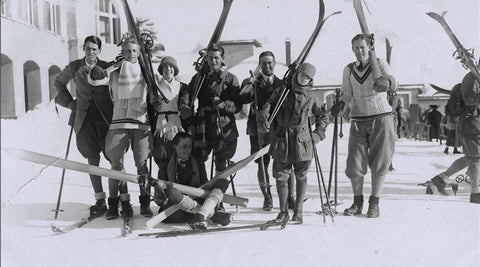
In the early 1990s, adaptive skiing evolved from a recreational and rehabilitative sport to a more advanced organisation of community programmes and competitions. In 1992, adaptive skiing was accepted into the Paralympic Games for the first time.
WHERE TO PRACTICE SNOOC SIT-SKIING?
From the Northern Alps to the Southern Alps, including the Vosges, the Massif Central and the Pyrenees, all the mountain ranges now offer sit-skiing for people with disabilities, as well as facilities for handiskiing. Some resorts have even become the standard bearers of "skiing for all" with a ski offer adapted for people with reduced mobility. The best ski resorts for handiskiing such as La Plagne, Combloux or Samoens have been committed for many years to the development and adaptation of handiskiing in their resorts.
It is of course preferable to contact the resort or the tourist office in order to prepare your handiskiing holiday as well as possible and to indicate your presence when you arrive in order to make the most of your seated skiing experience.
More and more ski resorts for the disabled are developing their mountain territory and their handiskiing offers for a public with reduced mobility.
HANDISKI In France:
See the list of ski schools where you can discover sit-skiing under the supervision of professionals who will help you to quickly master handiskiing.
A vidéo testimonial from Jean Charles POIROT, ESF instructor in Chamonix who supervises the SNOOC adapted ski activity.
You can get information in the tourist offices and rent your adapted ski equipment directly in the partner resorts and shops.
HANDISKI In Norway:
Norway is known for the quality of its care for people with disabilities. The biggest winter adapted sports event is called RIDDERRUKA and takes place in Beitostolen. https://www.ridderrennet.no/
More than 500 participants with disabilities come together to enjoy all kinds of snow activities.
The centre has a wide range of equipment and in particular sit-skis adapted to each need, including the SNOOC.
https://www.bhss.no/om-senteret/beitostoelen-healthsports-center/.

SNOOC In Switzerland:
Consult the list of Swiss resorts that offer the SNOOC activity
https://rsc.snooc.ski/resort-map/
SNOOC In Austria:
See the list of Austrian resorts that offer SNOOC
https://rsc.snooc.ski/resort-map/
WHERE TO GET INFORMATION ON WHEELCHAIR SKIING?
You will find information on all adapted activities in France and in particular on adapted skiing and chair skiing on the website: www.activhandi.fr
The website of the manufacturer Tessier is obviously a mine of information, especially if you want to test your ski chair before buying it: https://www.dualski.com/essayer-acheter/
To find out more about the different handiskiing disciplines, innovations in seated and adapted skiing and ski resorts with a programme for the disabled.
The website of the French Handiski Federation is an important source of information:
http://www.handisport.org/les-29-sports/ski-alpin-et-snowboard/

Extrem Skiseat Handiskiing In moovies !
VIDÉO 1
Tempo Uniski and Dualski by TESSIER - Sitski - Adaptive skiing - Handisport
VIDÉO 2
https://www.youtube.com/watch?v=k2FNNK2ggr0
UNDERSTANDING DISABILITY
"Most families have a disabled member, and many able-bodied people help and care for a relative or friend with a disability.
"Disability" is a broad term, covering :
- Imperments (changes in organic functions or anatomical structures, such as paralysis or blindness)
- Functional limitation (difficulties a person may have in performing an activity (walking, eating, etc.))
- Participation restriction (problems an individual may have in participating in a life situation, such as discrimination in employment or inaccessible transport)
And which results from the interaction between a health problem and personal and environmental factors (source: ICF)
The environment of an individual has a considerable impact on the disability and the severity of the disability situation. Inaccessible environments are sources of disability, as they create barriers to participation and inclusion. (e.g. winter sports)
Disability should be seen as a continuum rather than as a separate category. In fact, disability is a matter of degree: it is not a binary system (disabled/non-disabled).
Caution: Disability can be experienced very differently by different individuals -> The disabled population is diverse and heterogeneous.
The associated health problems can be visible or not, temporary or long term, static, episodic or degenerative, painful or without consequences.
"Each disabled person has his or her own preferences and reactions to disability.
THE ORIGINS OF DISTABILITY
According to data for the year 2011, about half of the population recognised as disabled was disabled from birth or as a result of an accident: 430,000 people were born with a disability (22% of the total), 360,000 were disabled by an accident at work (19%) and 275,000 by another type of accident (14%). Another half have a health problem that is aggravated by age or professional activity but is neither related to birth nor to an accident. For 80% of them, it is a question of physically arduous working conditions, 26% of stress and 15% of exposure to toxic products.

SEE ALSO: How to avoid knee pain when skiing ?
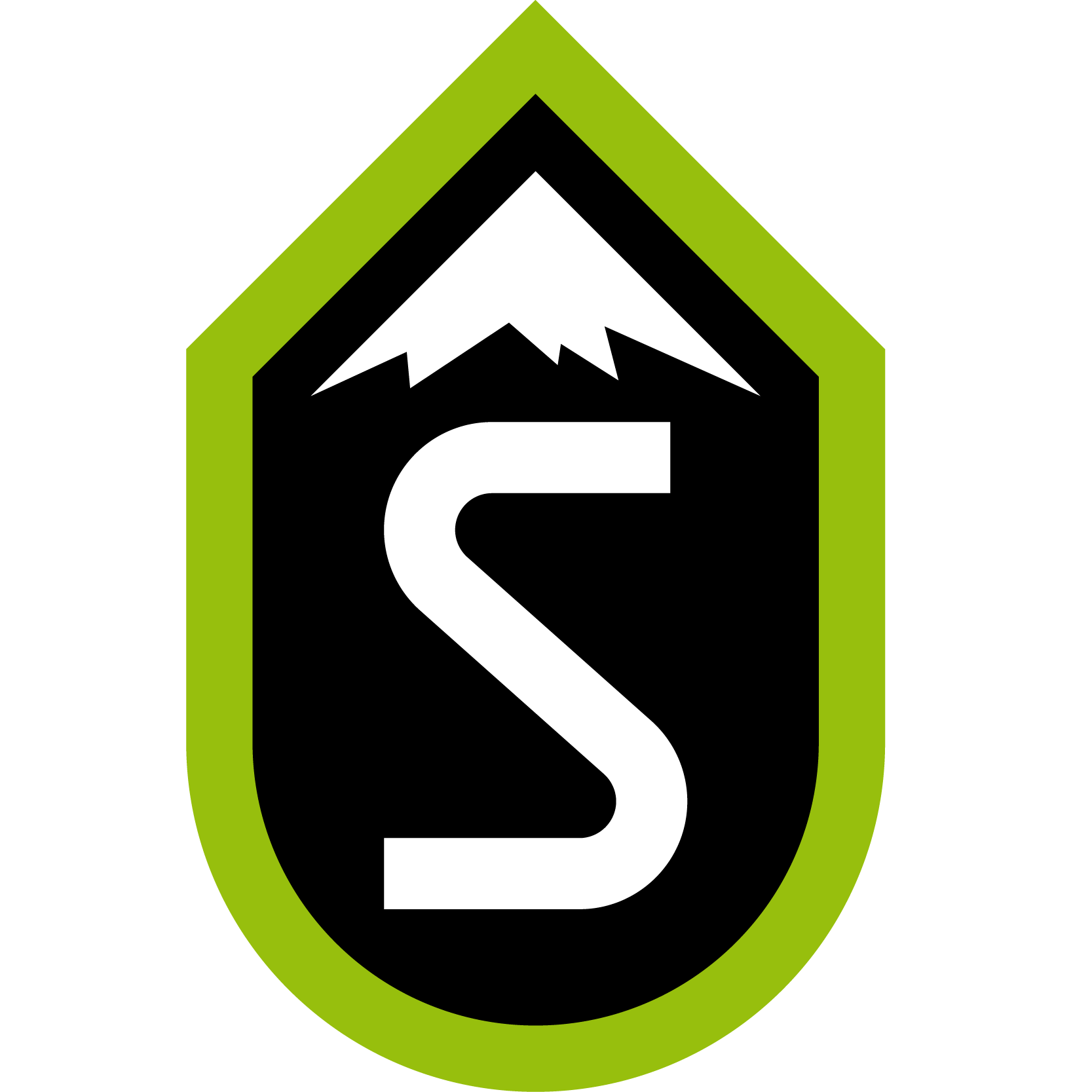
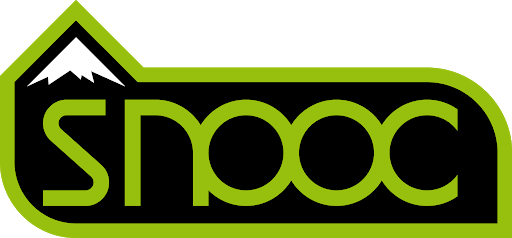
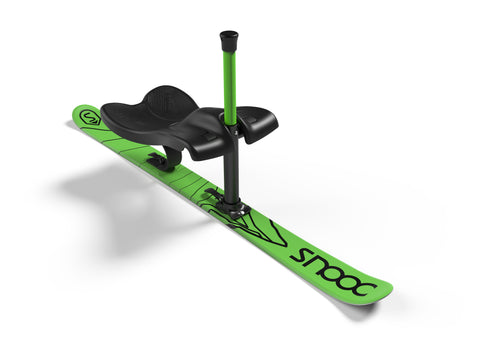
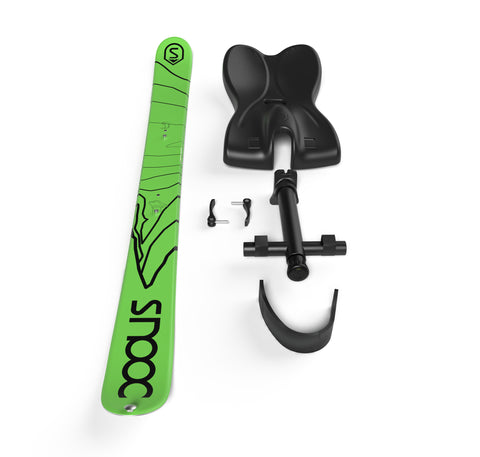
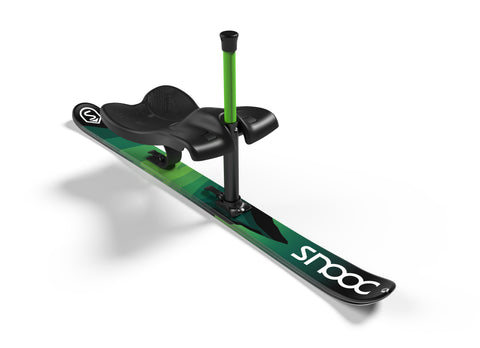
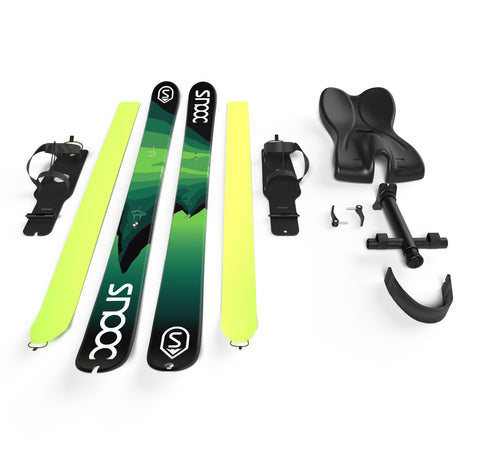
Il y a aussi pleins de combinaisons pour les skieurs debout . Pour ma part , je suis amputé jambe mais appareillé cuisse ( perte flexion genou) et paralysie du bras gauche . Je skie avec un mini ski sur ma prothèse plus courte pour compenser les pentes car pas de flexion . Un ski normal et mojo ski sur jambe et béquille ski bras droit . L’année dernière 1000 km 40 jours de ski 180000 mode distance verticale. 63 ans
On peut aussi faire la causette en parallèle, sans oublier de regarder devant soi, bien sûr.
Je ne veux pas faire de handiski pour 2 raisons :
Pemièrement, cela nécessite l’intervention d’une tierce personne, or je veux conserver la légèreté d’organisation de mes loisirs, à savoir, décider à n’importe quel moment quand et sur quelle piste je vais skier, et pouvoir changer d’avis tout au long de ma journée pour m’adapter et faire plaisir à mes enfants. Par ailleurs, mon handicap est invisible et je ne veux pas le rendre visible, non pas que j’en ai honte, mais cela n’a aucun intérêt,
Ensuite, mon handicap est léger et ne nécessite pas que je monopolise un intervenant externe pour ma petite personne, alors que d’autres, plus lourdement handicapées que moi, pourraient en profiter. Ce serait immoral de monopoliser une assistance alors que je dispose d’un système : le snooc, qui me rend totalement indépendante !
J’ai testé je ski mojo (exosquelette) il y a 4 ans, cela a été vraiment une très bonne expérience, mais j’ai immédiatement vu que mon problème de genou s’aggravant, le ski mojo ne pourrait pas me convenir durablement. Je pense que ce système est adapté aux pathologies non évolutives.
Et puis j’ai découvert le snooc : j’ai regardé toutes les vidéos qui en montraient l’utilisation et j’ai été convaincue que c’était LA bonne solution. J’en ai commandé un, et dès mon premier essai, ça a été la révélation.
J’ai redécouvert cette sensation de liberté que l’on peut ressentir sur les skis lorsqu’on est en altitude.
J’ai pu accompagner mes enfants et mon compagnon dans leurs descentes, mais quel bonheur pour nous tous ! et en plus, non seulement je me sens en sécurité mais surtout, je suis sécuritaire pour les autres usagers, car la prise en main du snooc est tellement simple ! Je ne peux qu’encourager les personnes qui comme moi ont des problèmes de genoux (ligaments rompus, entorses à répétition, prothèses partielles ou totales), car elles retrouveront ou découvriront cette grande joie de dévaler les pistes sans peur et sans douleurs. Par contre, je leur conseillerais de bien s’assurer après des stations de ski, que ce dispositif est accepté sur les pistes, car, malheureusement, certaines stations, dont certaines très connues(dont je ne citerai pas le nom), sont encore étonament très en retard pour l’accueil de personnes handicapées, pour ces dernières : une personne handicapée est en fauteuil roulant et peut faire du handiski… sinon,…rien, elles ne proposent rien… vision très restrictive et rétrograde du handicap.